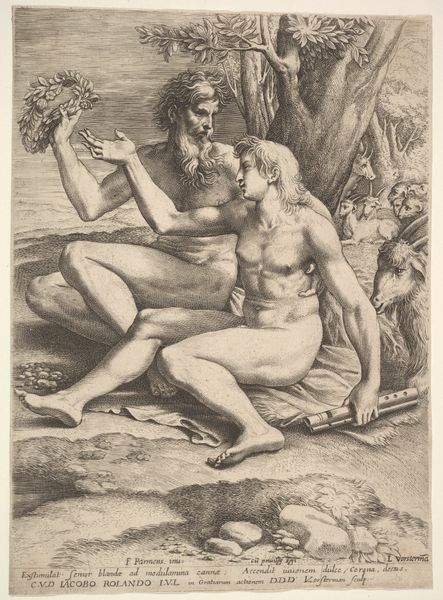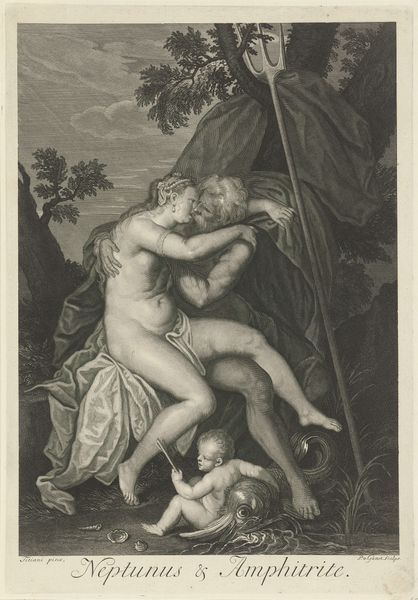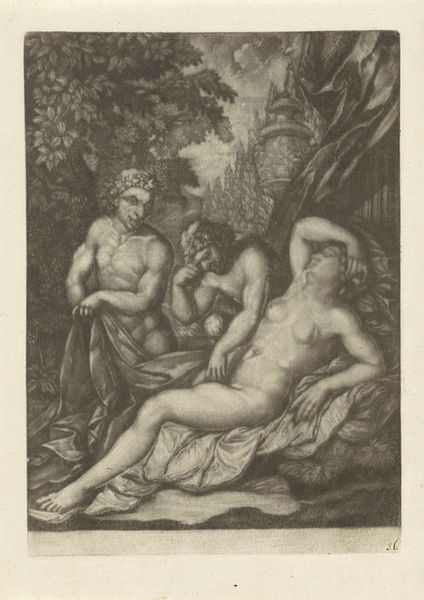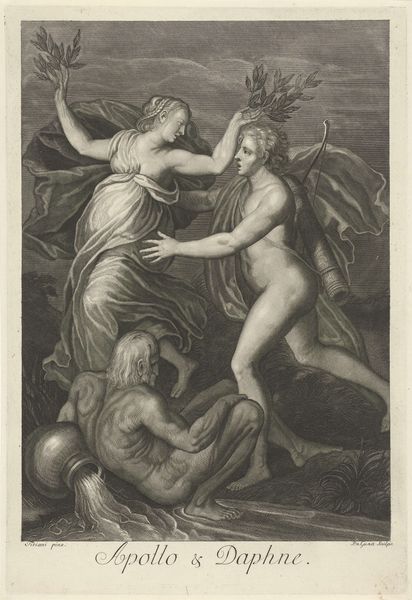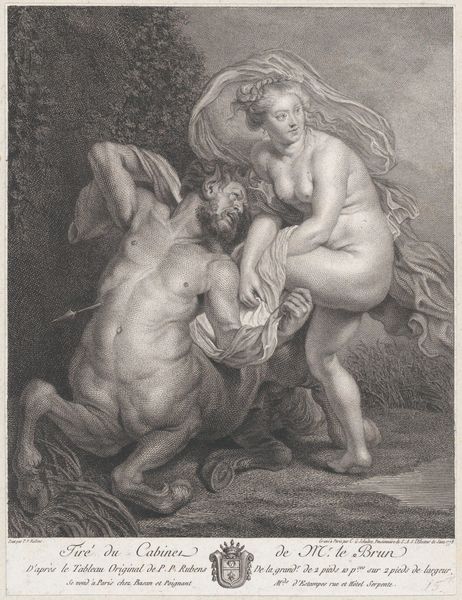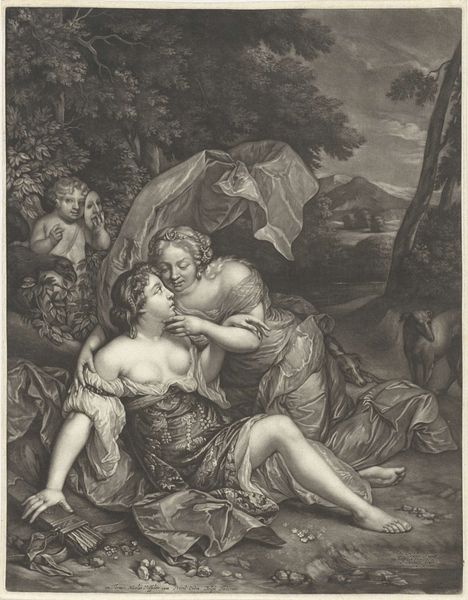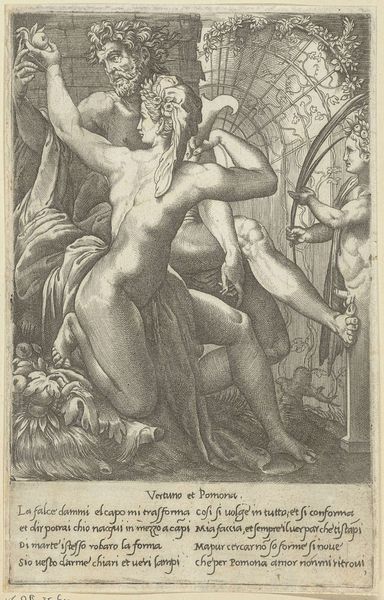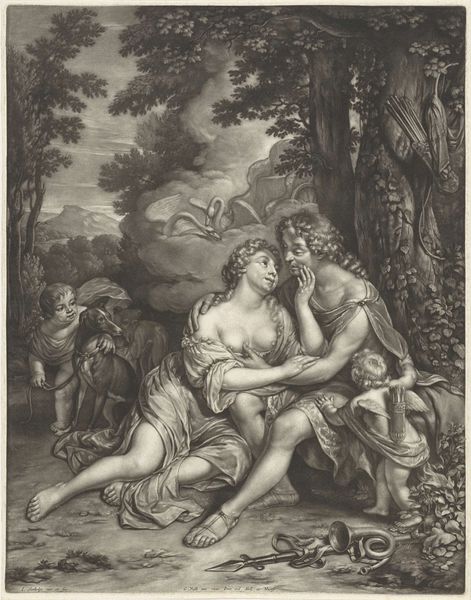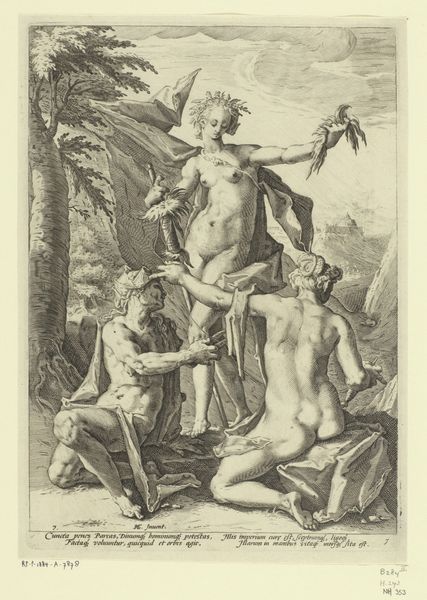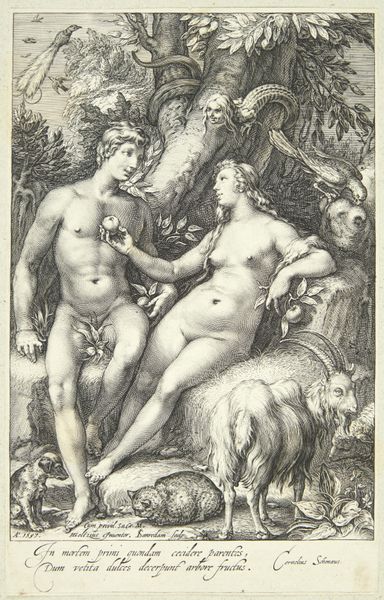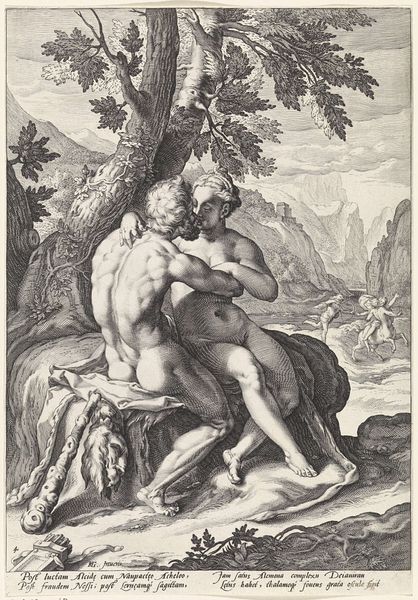
print, engraving
#
baroque
# print
#
charcoal drawing
#
figuration
#
mythology
#
history-painting
#
nude
#
engraving
Dimensions: height 432 mm, width 295 mm
Copyright: Rijks Museum: Open Domain
Curator: Ah, here we have "Hercules and Deianira," an engraving from between 1659 and 1731 after a design by Simon Vouet and engraved by Pieter van Gunst, currently residing here at the Rijksmuseum. Editor: It feels… unbalanced? Deianira looks almost indifferent, certainly detached, as if Hercules’s strength is a bit of a clumsy inconvenience. The dynamic between them feels more of a forced pose than anything deeply felt. Curator: Interesting. I see it more as a moment fraught with a certain unease. Note the inclusion of Cupid, grappling almost desperately with Hercules' club—an interesting foreshadowing. Doesn't it make you consider themes of desire, dominance, and vulnerability so often associated with the pair's story? Editor: Definitely the classic hero figure reduced to a sort of awkward domesticity. He's even wearing the skin of the Nemean lion. Symbolically, it’s as if his power, once expressed in slaying monsters, is now subjugated, literally under him. The composition draws so much attention to Deianira, a very common motif of this artist. Curator: Indeed. In art of this era, we are meant to recognize these attributes. Hercules, as hero, wearing the lion's skin, carries this connotation, yet, positioned in repose with Deianira, the engraving raises pertinent questions of control. Note the careful engraving work that depicts both characters so realistically. Editor: It's like she is tolerating Hercules; I wonder if van Gunst and Vouet were commenting on marriage during their time? Did it perhaps have resonance beyond the mythological, perhaps reflecting ideas regarding marital dynamics during the 17th and 18th centuries? Is the dynamic truly heroic or something else entirely? Curator: That is definitely a rich interpretive layer to consider. The image and its themes have indeed persisted through cultural history. I can sense traces of cultural memory within them; the idea of love versus duty. It will always continue to elicit thoughts about desire and the struggles for control. Editor: This engraving has made me consider the ways myth shapes—and sometimes reflects—our understandings of gendered power. Curator: And for me, it reasserts the profound persistence of ancient narratives within our cultural and symbolic landscapes.
Comments
No comments
Be the first to comment and join the conversation on the ultimate creative platform.
